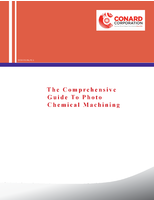Kontron to Support NVIDIA® Tegra® 3 and TI Sitara AM3874 MPU on Board and System Level
Kontron aims to minimize development efforts with application-ready platforms and brings the latest ARM technology into the embedded market on a wide scale
Eching, Germany - Today, Kontron has announced the support of the newly introduced NVIDIA® Tegra® 3 quad core mobile processor and Texas Instrument's recently launched Sitara AM3874 microprocessor. Both will become the key computing cores of Kontron's upcoming products that will further bring to life Kontron's strategic entry into ARM architecture market. Kontron will support both ARM processors on board level (Computer-on-Modules, Single Board Computers and Motherboards) and system-level solutions. Kontron's application-ready platforms will enable OEMs to develop lightweight fanless embedded devices such as handhelds, rugged HMI tablets, Box PCs, and digital signage systems within a shorter time frame and with reduced non-recurring engineering costs. As always, Kontron rolls up its shirt sleeves and assists OEMs side-by-side to achieve the complete solutions that meet application-specific requirements. Embedded World attendees can stop by Kontron's booth (hall 1, booth 460) and see firsthand how the company is implementing ARM technology in the innovative ultra low power (ULP) form factor with the working title ULP-COM - an ARM- and SoC-centric computer-on-modules standard pioneered by Kontron.
"The availability of the NVIDIA® Tegra 3 quad core mobile processor and Texas Instrument's Sitara AM3874 MPU ideally matches the timeline of our strategic entry into the ARM technology market. Our new ARM based solutions extend our x86 portfolio in the direction of complementary, ultra-low-power and ultra-mobile ARM-based devices," says Dirk Finstel, CTO at Kontron. "By utilizing Kontron's application-ready platforms, customers will benefit from massively reduced R&D investment costs and time-to-market compared to the current ARM and SoC approach that requires full custom designs. On top of this, Kontron offers extensive OS support for both platforms. Focus of the Nvidia Tegra 3 platform support will be Linux and Android 4.0. For the Sitara AM3874 we will work on comprehensive support for Windows Embedded Compact 7 as well as VxWorks and QNX. With scalable building blocks, such as the ultra low power COM modules, as well as comprehensive design-in support for these amazing new processors, Kontron's aim is to minimize development efforts and associated risks. Thus, Kontron brings the latest ARM technology to the embedded market on a wide scale."
Benefits of the upcoming boards with NVIDIA® Tegra® 3
The first long-term available embedded Kontron products to feature the NVIDIA® Tegra® 3 will be a Mini-ITX motherboard and a new 82 x 50mm ULP-COM Computer-on-Module.. Both platforms will be provided with long-term availability of 5 - 7 years and an optional industrial temperature range from -40 °C to +85 °C. The NVIDIA® Tegra 3 incorporates four ARM Cortex-A9 CPU cores delivering a scalable performance of up to 4x 1.3 GHz. An additional low-power companion core performing at 0 to 500 MHz reduces the power consumption to less than 1W in phases where only playback or background services are to be carried out. Furthermore, the Tegra® 3 quad-core CPU is complemented with a new 12-core NVIDIA® GeForce® GPU architected for low-power applications. It delivers more realism with dynamic lighting, physical effects and high resolution environments, plus support for 3D stereo, all of which give developers the means to bring the next generation of visually engaging, highly responsive 3D user interfaces to life. The integrated 1080p video playback processor enables HD footage stored on a mobile device to be viewed on HD displays without compromising battery life, enabling solar-driven digital signage solutions. With its integrated Image Signal Processor (ISP), image enhancing algorithms, support for up to 32 MP cameras as well as integrated video encoding for H.264, MPEG4, H.263, VP8, designs based on the NVIDIA® Tegra® 3 will be also ideally suited for sophisticated imaging applications such as machine vision or intelligent cameras.
Benefits of Texas Instrument's new ARM® Cortex(TM)-A8 microprocessors
The Texas Instruments Sitara AM3874 MPU has been selected for the new ULP-COM standard as well as for an embedded SBC format. The recently announced Texas Instruments Sitara AM3874 microprocessor (MPU) performing at up to 1 GHz at less than 2 watts power dissipation provides a wide range of choices for integration onto Kontron's embedded solutions. For example, it offers integration of the ARM Cortex-A8 core, peripherals for high-bandwidth connectivity such as SATA, D-CAN, PCI Express® (PCIe(TM)) and a Gigabit Ethernet® switch. Integrated 3D graphics allow for enhanced GUIs and display subsystems for camera connectivity and viewing. In an industrial automation application controlling a production line, the Sitara AM3874 ARM Cortex-A8 MPU can connect to and control IP and CAN networks, HD displays, keyboard, mouse, PC, SD card and various general purpose peripherals, all via one highly integrated processor. A high-speed, shared data bus allows for reduced communication overhead and quick access to shared data.
"Texas Instruments is excited by Kontron's move into ARM architecture and we're confident that the Texas Instruments Sitara AM3874 MPU provides an ideal starting point," said Matthias Poppel, European Director Embedded Processing Marketing and Applications at Texas Instruments. "The embedded market is demanding low-power mobile, stationary and connected devices and this is something TI has recognized and addressed. While Kontron looks to bring the most advanced embedded computing form factors, including the new ultra low power Computer-on-Module standard, and design-in services to the market, Texas Instruments and the Sitara AM3874 processor provides highly integrated and energy-efficient cores to meet customers' growing low-power application requirements."
The new ULP-COM modules as well as the embedded motherboards and SBCs will also be building blocks for Kontron's future ultra low-power, off-the-shelf platforms, including embedded handheld devices and rugged tablets, as well as Box PCs and HMI systems, that are planned for the second half of 2012.
For more information on Kontron's strategic entry into embedded ARM architecture please visit: http://www.kontron.com/kontrons-strategic-entry-into-embedded-arm-architecture/




